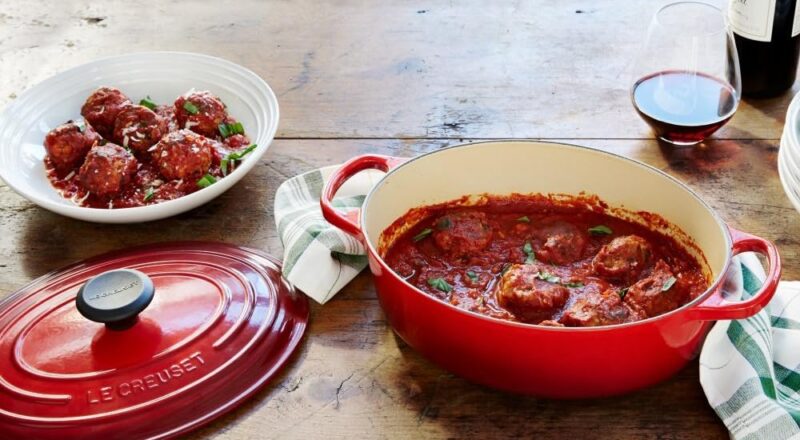For many kitchen professionals and cooking enthusiasts, the cast iron braiser is a beloved tool. Its ability to evenly distribute heat makes it perfect for a variety of cooking techniques, including reheating. In this guide, we will explore cast iron braiser reheating methods that can enhance your culinary creations.

Why Choose a Cast Iron Braiser?
Cast iron braisers are known for their versatility and durability. They can be used for searing, braising, baking, and of course, reheating. Their thick, heavy construction retains heat well, ensuring that your food is heated evenly.
Benefits of Using a Cast Iron Braiser
Whether you’re preparing a fresh meal or reheating leftovers, a cast iron braiser offers several benefits:
- Even heat distribution
- Retention of moisture
- Enhanced flavors
For more on the versatility of braisers, visit this article Cast Iron Braiser vs Casserole for a detailed comparison.
Preparing Your Braiser for Reheating
Before diving into reheating methods, its essential to prepare your cast iron braiser correctly. This ensures optimal results and prolongs the life of your cookware.
Cleaning and Seasoning
Ensure your braiser is clean and properly seasoned. A well-seasoned braiser prevents food from sticking and adds flavor to your dishes. To learn more about seasoning, check out how to prevent rust on cast iron braiser Prevent Rust for expert tips.
Cast Iron Braiser Reheating Methods
Stovetop Reheating
The stovetop method is one of the most common reheating methods for a cast iron braiser. It allows you to control the heat and prevent overcooking.
- Place your braiser on the stove over low to medium heat.
- Add a small amount of water or broth to maintain moisture.
- Cover with a lid and stir occasionally until the desired temperature is reached.
Oven Reheating
Oven reheating is perfect for dishes like casseroles or stews. The even heat of the oven ensures thorough reheating.
- Preheat your oven to 350F (175C).
- Place your braiser with the lid on in the oven.
- Reheat for 20-30 minutes, checking periodically.
For a more in-depth look at oven cooking, explore cast iron braiser for batch cooking Batch Cooking.
Microwave Alternative
While not traditional, using a microwave in conjunction with a braiser can speed up the process. Transfer the food to a microwave-safe dish and heat it partially before finishing in the braiser.
Tips for Successful Reheating
Here are some tips to ensure your reheated dishes are just as delightful as when they were first cooked:
- Always preheat your braiser for even cooking.
- Use a lid to trap moisture and flavors.
- Stir occasionally to prevent sticking.
Preserving the Quality of Your Food
One of the key advantages of using a cast iron braiser is its ability to maintain the quality and flavor of your food. By following these reheating methods, you can ensure your meals are always delicious.
Flavor Enhancement
The heavy lid and thick walls of the braiser help to lock in flavors, making it an ideal choice for reheating. For additional flavor inspiration, visit simple braising recipes Simple Braising Recipes from Chatelaine.

FAQ
What is the best way to reheat food in a cast iron braiser?
Stovetop reheating is generally preferred due to its control over heat and moisture. However, oven reheating is also effective for larger dishes.
Can I use my cast iron braiser in the microwave?
No, cast iron should not be used in a microwave. Instead, use a microwave-safe dish to partially heat food before transferring it to the braiser.
How do I maintain my cast iron braiser?
Regular cleaning and seasoning are essential. Avoid using harsh detergents and always dry your braiser thoroughly.
This article contains affiliate links. We may earn a commission at no extra cost to you.

